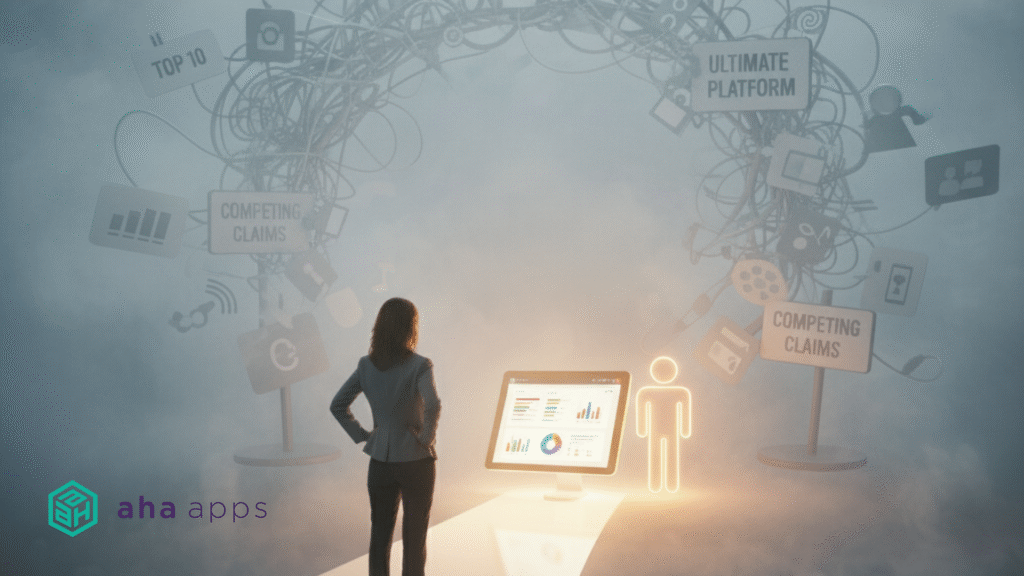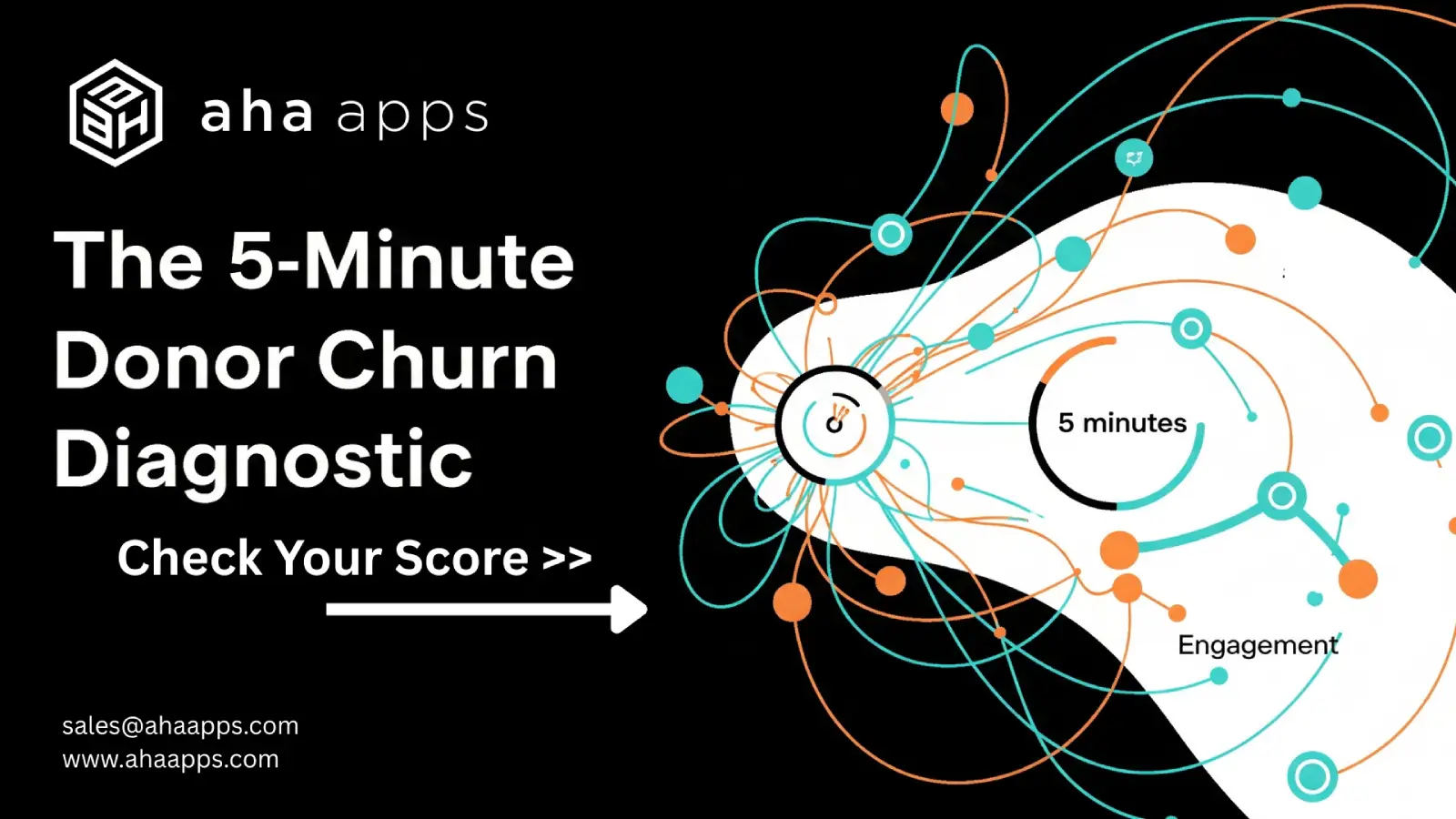Oct 8th, 2025
By Satish Reddy | Reading time 8 mins
What is the Best CRM for Nonprofits? A Practical Checklist for Small Teams
Choosing a new CRM amidst a fog of “Top 10” lists and competing claims can lead to decision paralysis. For a nonprofit leader, the stakes are incredibly high. The right choice saves your team countless hours and fuels growth; the wrong one wastes precious funds and frustrates your staff. The search for the best crm for nonprofit organizations can feel overwhelming, but it doesn’t have to be.
The truth is, there’s no single “best CRM” only the right fit for your unique mission. This practical checklist will help you determine what is the best crm for nonprofits like yours, cutting through the noise to find a true partner in your growth.

Take The 5-Minute Donor Churn Diagnostic.

Beyond the Slogans: Defining "Best" for Your Unique Mission
Before you watch a single demo, the most critical step is to look inward. A tool is only as good as its alignment with the people and processes it’s meant to serve. A mismatch here is where most implementations fail. The right choice for you will be a system that supports:
1. Your Team: The reality for most small to medium-sized nonprofits is a lean, multi-tasking staff often facing burnout. A system must be accessible and intuitive for the team you have right now.
2. Your Processes: You have proven methods for cultivating donors and managing volunteers. A rigid CRM forces you into its predefined boxes, creating frustrating workarounds. The right CRM should adapt to your workflow, not the other way around.
3. Your Future: The goal isn’t just to solve today’s spreadsheet headaches; it’s to invest in a platform that can support your 3-to-5-year vision. A cheap tool might seem appealing now, but it can quickly become a ceiling on your growth, trapping you in yet another ineffective system.
Your Practical CRM Evaluation Checklist
Use these six critical questions to guide your research and structure your conversations with vendors. They will help you look past the flashy features and assess the core, long-term value of any platform.
1. The Growth Question: Does it penalize us for success?
Why it matters: Many CRM platforms punish you for doing well. Their pricing is based on the number of constituent records, meaning as you grow your community of donors and volunteers, your bill goes up. This model forces you to count records when you should be counting dollars raised. Growth shouldn’t trigger surprise price hikes that strain an already tight budget.
What to look for: A platform with a “No Per-Record Pricing” model. This means your costs are predictable and tied to your team’s size, not your data volume. You can scale your outreach and add every supporter without the fear of hitting an arbitrary limit or facing unexpected fees.
Red Flag to Watch For: If a vendor’s pricing page has complicated tiers based on contact numbers or is vague about overage fees, be cautious. This is how costs spiral unexpectedly.
2. The Flexibility Question: Can the software adapt to our unique workflow?
Why it matters: Your mission is unique, and so are your processes. A generic CRM might not understand your specific donor cultivation stages or volunteer onboarding steps. You’ll be forced into messy workarounds in spreadsheets the very problems you’re trying to escape.
What to look for: A solution that is both purpose-built for nonprofits and highly customizable. The system should come pre-configured with the dashboards and reports you need, but it should also be easily adaptable to track what makes your organization special.
Red Flag to Watch For: Be wary of any system described as “simple” if it means “rigid”. Ask a vendor, “Can you show me how we would track the unique stages of our stewardship process?”. Their answer will reveal how truly flexible the system is.
3. The Insight Question: Are the reports easy to generate and actually useful?
Why it matters: Data is useless if you can’t easily access it and understand what it’s telling you. If running a report is a major technical project, your fundraising team won’t use it, and you’ll continue making decisions based on hunches instead of facts. You need insights, not just data tables.
What to look for: A system with a powerful, visual, and intuitive reporting engine that includes pre-built, strategic reports to answer critical fundraising questions, such as:
- LYBUNT/SYBUNT Reports: To instantly see who gave Last Year But Unfortunately Not This Year so you can re-engage lapsed donors.
- Non-Donor Volunteers: To identify passionate supporters who are volunteering but haven’t yet made a financial gift your warmest prospects.
Red Flag to Watch For: If a demo shows a complex, code-based report builder, ask them to build a common nonprofit report from scratch. If it takes more than a few minutes, it will be a major headache for your team.
4. The Integration Question: Will our systems finally talk to each other?
Why it matters: Juggling separate tools for donors, volunteers, events, and email drains precious time from your mission. When your data lives in silos, you miss critical opportunities. That dedicated volunteer could be your next major donor, but you’ll never know if their information is trapped in a separate system. The best crm systems for nonprofits are designed to prevent this.
What to look for: A CRM that acts as a central hub or an all-in-one workspace. It should seamlessly integrate with the tools you already use, like Mailchimp or Constant Contact for marketing and Stripe for payments, creating a single source of truth.
Red Flag to Watch For: Systems that require expensive, custom-built integrations or have very few native connections. Ask vendors directly, “How does your platform connect with our email marketing software?” A vague answer is a bad sign.
5. The Support Question: Is there a real person to help when we’re stuck?
Why it matters: Technology is powerful, but when you hit a snag, you need a partner, not just a ticket number. Your team is already stretched thin; they don’t have time to wait days for a response or navigate a complex, impersonal support portal.
What to look for: A vendor who provides responsive, unlimited support from a team that understands nonprofit challenges. Look for commitments to quick response times and access to both phone and email support without hidden fees. This human element is a key feature of the best crm for nonprofit organizations.
Red Flag to Watch For: Vendors that charge extra for phone support or have a reputation for slow, unhelpful service. Check third-party review sites for candid feedback on customer support.
6. The Transition Question: What are the hidden costs of getting started?
Why it matters: The fear of being trapped by technology is real. Switching CRMs is a daunting prospect, and one of the biggest hidden costs is data migration. Cleaning, mapping, and importing years of donor history is a complex process, and many vendors charge thousands for it—a significant, unbudgeted expense that can stop a transition in its tracks.
What to look for: A true partner who will handle the transition as part of their service. Look for vendors who offer zero-cost or zero-hassle data migration. This removes a massive financial and logistical barrier, ensuring you don’t lose years of carefully cultivated relationships in the switch.
Red Flag to Watch For: Vague answers about migration costs. If a vendor can’t give you a clear, fixed price and a detailed plan for your data transfer, consider it a major red flag.
The "Aha Impact": Finding Clarity and Confidence
Choosing a CRM is a transformative moment for a nonprofit. The goal isn’t just to buy software; it’s to find a partner that brings clarity to your operations, confidence to your strategy, and eliminates the fear of getting stuck. This feeling of certainty is the Aha Impact.
It’s the moment you realize a system can truly adapt to your needs, empower your team with actionable insights, and scale with your mission without penalizing your growth or hiding costly fees. It’s the confidence that comes from making a smart, future-proof investment that will finally free your team from administrative burdens to focus on building the relationships that fuel your mission.
Don’t settle for a system that forces you to compromise. Use this checklist to guide your journey and find the CRM that is truly the best crm for nonprofit organizations like yours.
Ready to find a CRM that adapts to you?
If you’re tired of rigid systems and surprise fees, it’s time for a platform built around your mission, not the other way around. Let’s explore how Aha Impact gives you the freedom to grow without the financial anxiety.
With Aha Impact, you get:
- Zero-Cost Migration*
- No Per-Record Pricing
- Unlimited Support
Schedule a no-obligation discovery call with the Aha Apps team today, and let’s find your “Aha Impact” together.
*Available for small to mid-sized nonprofit organizations. Terms and conditions apply
Why 70% of Your First-Time Donors Never Return—And How to Fix It
Part 1 uncovers the hidden dangers of The Leaky Bucket Syndrome and why most new donors never come back. Discover what’s really causing the drop-off—and why outdated systems might be quietly sabotaging your fundraising efforts.